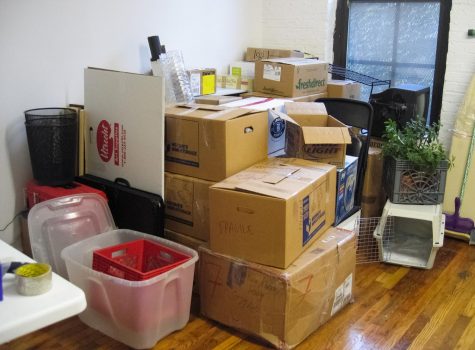A Christmas rib roast
December 4, 2015
The holidays are a time of cheer and love with family and friends, but let’s not forget about the food. This stunning, simple recipe is the roast with the most and sure to be a star on your dinner table.
The recipe comes from Food and Wine magazine and is the holiday special of legendary Louisiana Chef John Besh. The Pro Tips come from my experience making similar dishes himself.
Ingredients:
• 2 sticks unsalted butter, softened.
• 1 head of garlic, cloves coarsely chopped.
• 1 cup prepared horseradish.
• 1/4 cup plus 2 tablespoons chopped thyme.
• 3 tablespoons chopped rosemary.
• 3 tablespoons chopped sage.
• One 16-pound rib roast of beef.
• Salt and pepper.
Chef’s Corner Pro Tips:
1. The prime rib is also known as the standing rib roast. It is a cut of beef from the primal rib, one of the 9 primal cuts. It is often standing on the rib bones in the pan so the meat doesn’t directly touch the cooking surface.
2. A speedy trick for peeling the garlic is to use two bowls. First smash the garlic so it all breaks apart. Then put the garlic cloves and all the peeled bits in a bowl. Use the second bowl as a lid for the first and then shake the bowls with gusto. All of the garlic should be peeled and ready to chop.
3. The horseradish herb butter can be made ahead of time. It can refrigerate overnight if need be, but just remember to soften it after you take it out of the fridge.
4. To put it bluntly, fat is flavor. If you can, choose a well-marbled meat. The intramuscular fat helps make it more flavorful, juicy and tender.
5. Buy bone-in meat. The bone doesn’t actually have much effect on flavor, but it will help with insulation when cooking. The bones have a higher thermal resistance, which will cause the meat around them to cook slower. This will result in even more tender and juicy pieces. To make carving a little easier, your butcher can remove the bones, and you can simply tie them back later.
6. Season generously before cooking. Not only is it crucial to season your food well, but for meat even more so. Salting the surface of the meat 45 minutes or even a day ahead will draw out moisture. You can leave the roast uncovered in the fridge overnight for this process. It helps break down some of the meaty proteins, loosening the structure and making it tenderer. The meat will also absorb the salt for good flavor without it being overpowering.
7. Rib roasts will usually have a two-tier process for cooking. Most recipes will call to sear the meat before it goes in the oven, but the opposite works even better. Slow roasting first then browning leads to less overcooked meat in the layers below. If you were to sear the meat at a high temperature first, it would create an ideal crust, but proteins will be damaged in that process and the meat will lose juices.
8. Aim for 115 to 120 degrees Fahrenheit for medium rare (125 to 130 degrees Fahrenheit after resting), or 125 to 130 degrees Fahrenheit for medium (135 to 140 degrees Fahrenheit after resting). And remember, a roast will continue to rise by 5 to 10 degrees Fahrenheit as it rests because of carry-over heat. The larger the mass, the greater the rise because of the carry-over heat.
9. Always use an instant-read thermometer instead of a stand-in one. If you leave the device standing in the meat, the metal conducts heat into the product, leading to false readings.
10. Let the meat rest for at least 20 minutes before carving. If you do not wait, all the juices will run out, leaving a beautiful product dry and texturally unappealing.
Directions:
1. Preheat the oven to 325 degrees Fahrenheit. In a food processor, combine the butter with the garlic, horseradish, thyme, rosemary and sage and process to a paste.
2. Stand the roast in a very large roasting pan. Season generously all over with salt and pepper, and set it fatty-side-up. Spread the horseradish-herb butter all over the top. Bake for about three and a half hours, until an instant-read thermometer inserted in the center registers 125 degrees Fahrenheit for medium rare or however done you prefer. Transfer the roast to a carving board to rest for at least 20 minutes, or for up to an hour before serving.
Daniel Anderson is a freshman studying hospitality and business management from Bellevue. He can be contacted at 335-1140 or by [email protected]. The opinions expressed in this column are not necessarily those of the staff of The Daily Evergreen or those of The Office of Student Media.




















